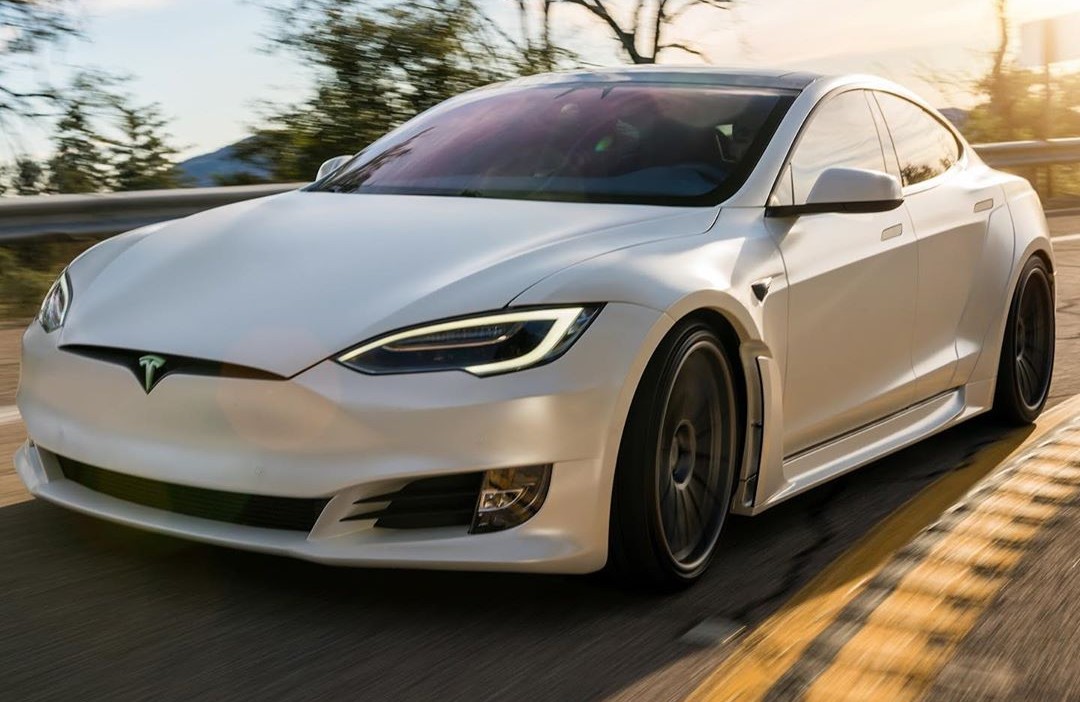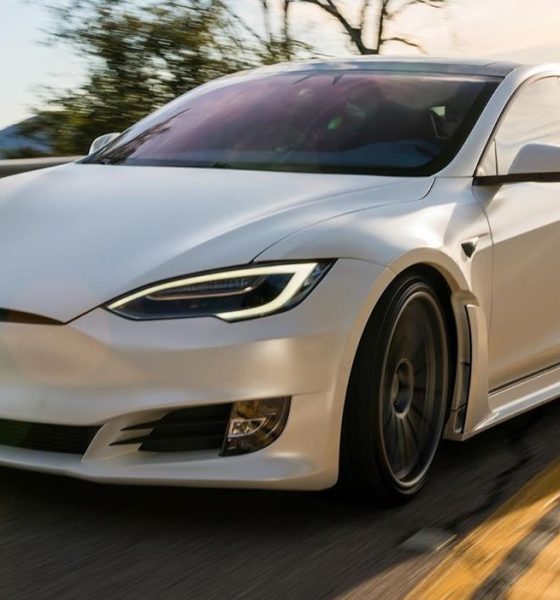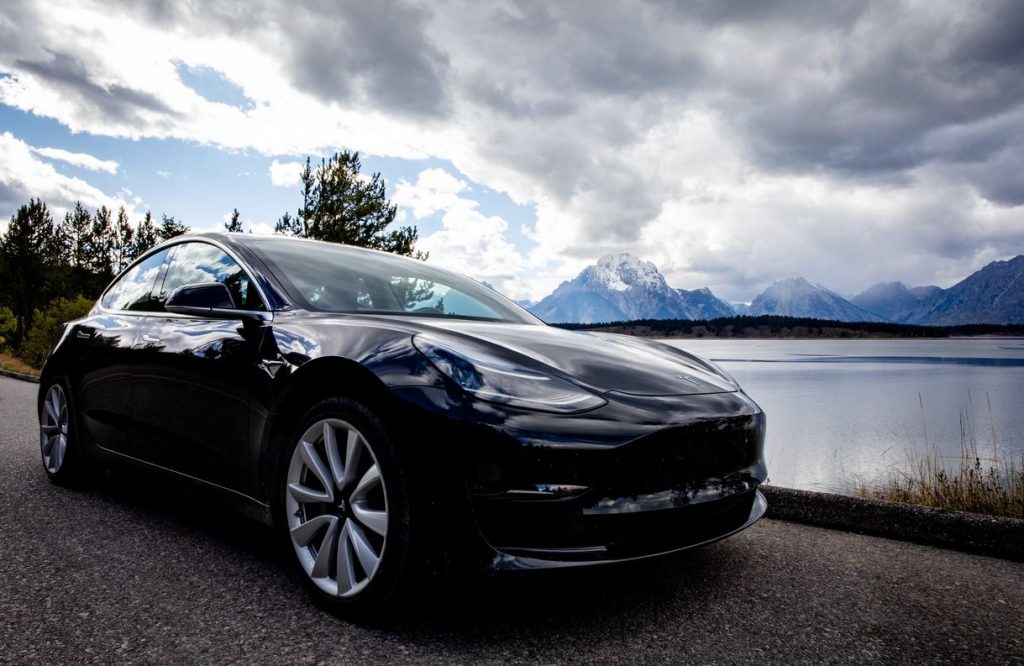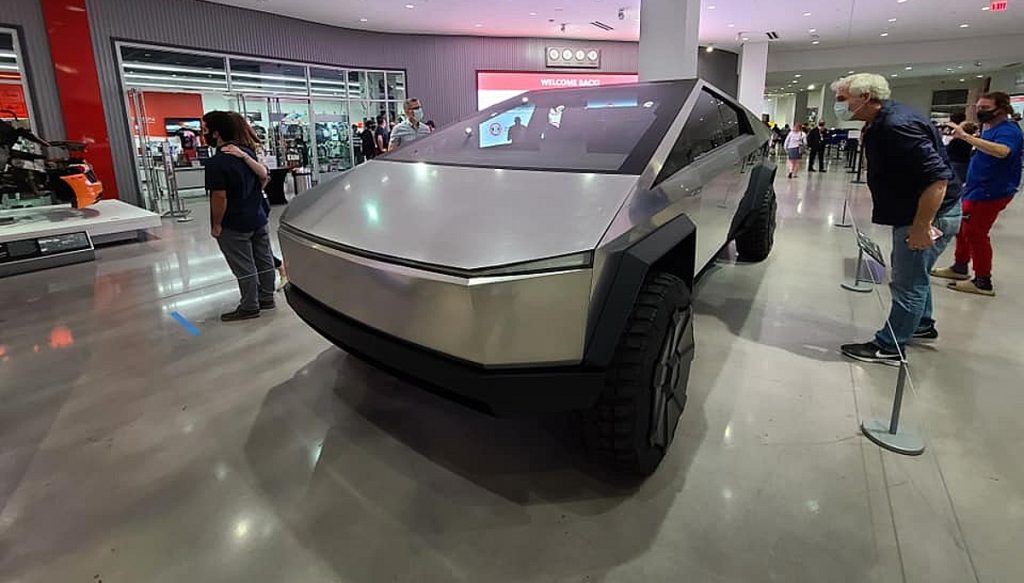

News
Tesla is going mainstream with every milestone: US car buyers just need to know about it
Just recently, Tesla’s Model S, Model 3, and Model X made a big splash at cars.com’s 2020 American-made Index, an annual survey that ranks vehicles which “contribute most to the US economy” through factory jobs, manufacturing plants, and parts sourcing. Tesla’s Model S3X line took numbers 3, 4, and 9 in the Top 10 list, which is impressive on its own right. However, these results could have easily been better, if more respondents to cars.com’s study had been more aware about Tesla, its products, and its operations.
A look at the results of cars.com’s Top 10 American-made Index list shows that there is still an information divide between Tesla’s electric vehicles and mainstream car buyers. Topping the Top 10 rankings of the survey are the Ford Ranger and the Jeep Cherokee, which are iconic for being American cars but are hardly more US-based than Tesla’s trifecta of electric vehicles. In fact, a case could even be made that the Model S, Model 3, and Model X are more American than the Ranger and Cherokee, considering that Tesla’s vehicles are made in the US using American labor and (for the most part) components.
This year marks the first time that Tesla supplied cars.com with the information necessary to qualify for the annual survey. According to Kelsey Mays, cars.com’s senior consumer affairs and vehicle evaluations editor, the location where a vehicle is made is becoming increasingly important these days, especially in the light of the ongoing pandemic.

“We live in a global economy, but cars.com’s research found 70% of American shoppers consider a car’s U.S. economic impact a significant or deciding factor in their vehicle purchase. The COVID-19 pandemic is increasing Americans’ desire to buy local, with 37% reporting they are more likely to buy an American-made vehicle in light of the economic disruption of COVID-19,” Mays said.
This is where the information gap between Tesla and mainstream American car buyers still exists. According to cars.com, only about 10% of American car buyers recognized Tesla as “California-made” in 2019, and this year, the number has increased to 18%. The motoring firm added that only half of the survey’s total respondents were aware that Tesla was an American company, and only a third of those who participated knew that the Model S was built in the United States. These show that for a significant number of mainstream car buyers, Tesla’s vehicles are still an unfamiliar concept, and one that is not associated with the US the same way as Ford’s pickups and Jeep’s off-roaders.
While it is impressive that the number of American buyers recognizing Tesla as a US-focused company is growing over the past years as per cars.com’s survey results, it appears that Tesla could still do so much more to emphasize the fact that its vehicles are made in the US. Granted, the company is very firm in its stance against traditional advertising, but there are ways to disseminate information about the company and its products without resorting to conventional marketing tricks.

These could go a long way towards ensuring that more people remain informed about what Tesla really is and what its products can do. After all, Tesla’s electric vehicles still made a strong impact on cars.com’s Top 10 American-made Index, even with a significant number of respondents being uninformed about the company or the nature of its operations.
Fortunately, the company’s next two vehicles would likely raise more awareness about Tesla’s US-based roots. Following the Model Y crossover, Tesla is poised to ramp the production of the Semi, a Class 8 long-hauler, and the Cybertruck, a pickup. Both these vehicles are poised to be operated by drivers who personify the ideals of workers that value utility and practicality. And these, ultimately, could help make Tesla be recognized better as a company that makes American cars by American workers using American resources.
This very point was emphasized by Jay Leno in a previous statement about Tesla and the flak it receives from critics. Speaking with CNBC’s The Exchange, Leno candidly stated that he does not really get where all the criticism of Tesla is coming from, considering the company’s milestones over the years.
“In the mid-teens, there were 350 car companies in the United States. Every year since then, two or three of them dropped out… There’s a whole bunch that just disappeared. So here comes a brand new car company, so that’s impressive. It’s a tough business to get into; and the fact that Tesla is making a go of it and quite successfully, I think is impressive and should be applauded. We’re becoming like the British — we like noble failures. I would watch, listen to these radio talk shows just tear Tesla apart; and I go, ‘Here’s a guy, building an American car in America, using American labor. Why are you not rooting for it to be successful? Why do you wish it would fail?’ I don’t quite understand,” he said.

News
Tesla FSD fleet is nearing 7 billion total miles, including 2.5 billion city miles
As can be seen on Tesla’s official FSD webpage, vehicles equipped with the system have now navigated over 6.99 billion miles.

Tesla’s Full Self-Driving (Supervised) fleet is closing in on almost 7 billion total miles driven, as per data posted by the company on its official FSD webpage.
These figures hint at the massive scale of data fueling Tesla’s rapid FSD improvements, which have been quite notable as of late.
FSD mileage milestones
As can be seen on Tesla’s official FSD webpage, vehicles equipped with the system have now navigated over 6.99 billion miles. Tesla owner and avid FSD tester Whole Mars Catalog also shared a screenshot indicating that from the nearly 7 billion miles traveled by the FSD fleet, more than 2.5 billion miles were driven inside cities.
City miles are particularly valuable for complex urban scenarios like unprotected turns, pedestrian interactions, and traffic lights. This is also the difference-maker for FSD, as only complex solutions, such as Waymo’s self-driving taxis, operate similarly on inner-city streets. And even then, incidents such as the San Francisco blackouts have proven challenging for sensor-rich vehicles like Waymos.
Tesla’s data edge
Tesla has a number of advantages in the autonomous vehicle sector, one of which is the size of its fleet and the number of vehicles training FSD on real-world roads. Tesla’s nearly 7 billion FSD miles then allow the company to roll out updates that make its vehicles behave like they are being driven by experienced drivers, even if they are operating on their own.
So notable are Tesla’s improvements to FSD that NVIDIA Director of Robotics Jim Fan, after experiencing FSD v14, noted that the system is the first AI that passes what he described as a “Physical Turing Test.”
“Despite knowing exactly how robot learning works, I still find it magical watching the steering wheel turn by itself. First it feels surreal, next it becomes routine. Then, like the smartphone, taking it away actively hurts. This is how humanity gets rewired and glued to god-like technologies,” Fan wrote in a post on X.
News
Tesla starts showing how FSD will change lives in Europe
Local officials tested the system on narrow country roads and were impressed by FSD’s smooth, human-like driving, with some calling the service a game-changer for everyday life in areas that are far from urban centers.

Tesla has launched Europe’s first public shuttle service using Full Self-Driving (Supervised) in the rural Eifelkreis Bitburg-Prüm region of Germany, demonstrating how the technology can restore independence and mobility for people who struggle with limited transport options.
Local officials tested the system on narrow country roads and were impressed by FSD’s smooth, human-like driving, with some calling the service a game-changer for everyday life in areas that are far from urban centers.
Officials see real impact on rural residents
Arzfeld Mayor Johannes Kuhl and District Administrator Andreas Kruppert personally tested the Tesla shuttle service. This allowed them to see just how well FSD navigated winding lanes and rural roads confidently. Kruppert said, “Autonomous driving sounds like science fiction to many, but we simply see here that it works totally well in rural regions too.” Kuhl, for his part, also noted that FSD “feels like a very experienced driver.”
The pilot complements the area’s “Citizen Bus” program, which provides on-demand rides for elderly residents who can no longer drive themselves. Tesla Europe shared a video of a demonstration of the service, highlighting how FSD gives people their freedom back, even in places where public transport is not as prevalent.
What the Ministry for Economic Affairs and Transport says
Rhineland-Palatinate’s Minister Daniela Schmitt supported the project, praising the collaboration that made this “first of its kind in Europe” possible. As per the ministry, the rural rollout for the service shows FSD’s potential beyond major cities, and it delivers tangible benefits like grocery runs, doctor visits, and social connections for isolated residents.
“Reliable and flexible mobility is especially vital in rural areas. With the launch of a shuttle service using self-driving vehicles (FSD supervised) by Tesla in the Eifelkreis Bitburg-Prüm, an innovative pilot project is now getting underway that complements local community bus services. It is the first project of its kind in Europe.
“The result is a real gain for rural mobility: greater accessibility, more flexibility and tangible benefits for everyday life. A strong signal for innovation, cooperation and future-oriented mobility beyond urban centers,” the ministry wrote in a LinkedIn post.
News
Tesla China quietly posts Robotaxi-related job listing
Tesla China is currently seeking a Low Voltage Electrical Engineer to work on circuit board design for the company’s autonomous vehicles.

Tesla has posted a new job listing in Shanghai explicitly tied to its Robotaxi program, fueling speculation that the company is preparing to launch its dedicated autonomous ride-hailing service in China.
As noted in the listing, Tesla China is currently seeking a Low Voltage Electrical Engineer to work on circuit board design for the company’s autonomous vehicles.
Robotaxi-specific role
The listing, which was shared on social media platform X by industry watcher @tslaming, suggested that Tesla China is looking to fill the role urgently. The job listing itself specifically mentions that the person hired for the role will be working on the Low Voltage Hardware team, which would design the circuit boards that would serve as the nervous system of the Robotaxi.
Key tasks for the role, as indicated in the job listing, include collaboration with PCB layout, firmware, mechanical, program management, and validation teams, among other responsibilities. The role is based in Shanghai.
China Robotaxi launch
China represents a massive potential market for robotaxis, with its dense urban centers and supportive policies in select cities. Tesla has limited permission to roll out FSD in the country, though despite this, its vehicles have been hailed as among the best in the market when it comes to autonomous features. So far, at least, it appears that China supports Tesla’s FSD and Robotaxi rollout.
This was hinted at in November, when Tesla brought the Cybercab to the 8th China International Import Expo (CIIE) in Shanghai, marking the first time that the autonomous two-seater was brought to the Asia-Pacific region. The vehicle, despite not having a release date in China, received a significant amount of interest among the event’s attendees.








